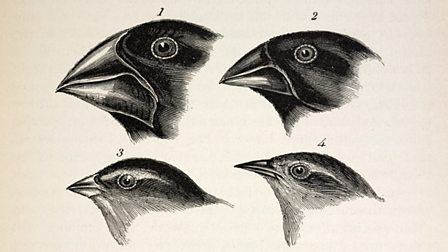Home > Sections > Famous Scientists > Charles Darwin
Charles Darwin
Life Details
Born: February 12th 1809. Died: April 19th 1882.
Introduction
One of the most famous biologists of all time, Charles Darwin's work set the precedent on how species work, the differences they have, and why that is as well.
Expeditions
Charles Darwin studied Theology in Cambridge University when he left school, and it was his love for the natural world that later became his passion. When he had finished college (he was meant to stay until June 1831) he was away from home for a few days. Upon his return he found a letter putting him forward to be a naturist on the HMS Beagle. It was to embark on atwo-year voyage.
Although it was delayed, it set for sail in December 1831, and ended being a five-year expedition. While on the expedition, Darwin would investigate geology and started to make a natural history collection. He wrote notes while on the ship, despite sea sickness, with the majority being about marine invertebrates.
While the Beagle visite many places, it was the Galapagos Islands that Darwin had most interest in. The now famous finches drawing of the four different species having their differences shows us that Darwin was studying them for long periods of time, and he realised these differences, noting that their beaks were used to carry out different things.
Interesting fact: the original expedition of HMS Beagle was supposed to last for two years. It ended up being a five-year expedition. This suited Charles Darwin, as he could then study more on the theory of natural section.
Theory of Natural Selection
Upon Darwin's return to Great Britain in 1836, he then spent years analysing the data he had collected, comparing specimens and pictures he drew and came up with the theory of natural selection. But, what is this theory?
Darwin realised that through time, one species evolved from its original species through a 'survival of the fittest' mantra. Organisms with the best characteristics suited to the area they lived, survived and thrived, whereas other species would not. They would either move on to other areas, or die out.
This theory formed the basis of what we now know and continue to develop on. His work has helped scientists to form the basics (and complexities) of the natural world, from being able to name species, form levels of organisation between organisms, give us the binomial nomenclature naming system, and other aspects.
What Else for Darwin?
Darwin released a book of all his findings in 1859. This was all the information and data he had collated and put together and when it was released it caused a lot of controversy and outrage from members of the Church of England, as it was a purely scientific approach to how we all came to being. It quickly became a bestseller that proved popular among scientists.
There were Others...
Exactly. You don't think Darwin was the only person looking at all this as well? Alfred Russel Wallace was also a keen naturist, and he too went on an expedition to find the origin of species. This proved another popular set of findings, and he formed the Wallace line, a theoretical line between the animal life of the Australian region and that of Asia.





